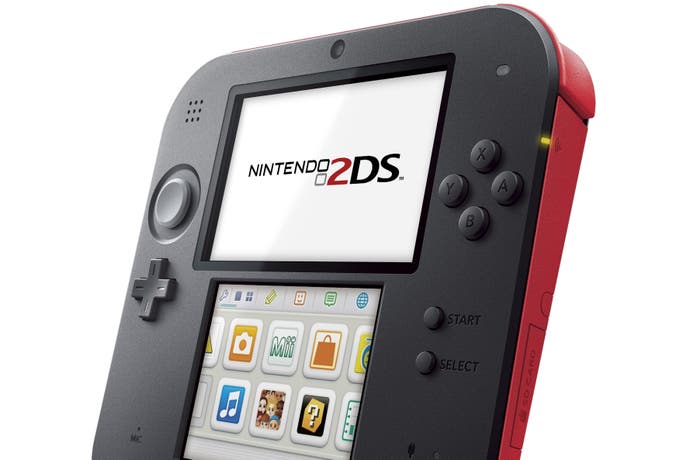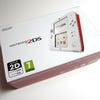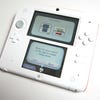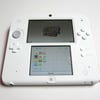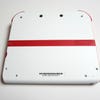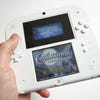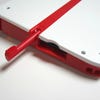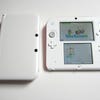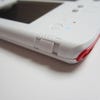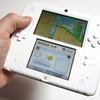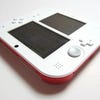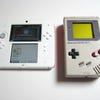Nintendo 2DS review
Another dimension.
It's an indication of just how much the handheld gaming arena has changed in the past few years that Nintendo's shock announcement of the 2DS was greeted with such mirth and derision by the general public; once upon a time, the allure of new hardware from the Kyoto veteran would have been utterly irresistible to anyone who had experienced the joys of playing Tetris or Pokémon on their monochrome Game Boy, but these days Nintendo's dominance of the market it once ruled with an iron fist is under fire from all sides. The 3DS has more than proven its worth with some superb titles in 2013, but in terms of pure sales figures it's not the successor to the DS (still the world's best-selling handheld) the company would have wanted. Many gamers are ditching dedicated portable consoles in favour of convergent devices like smartphones and tablets, and the revenue generated by the likes of the App Store and Google Play market now eclipses sales of handheld software.
Given this background, it's perhaps unsurprising that many have balked at the very concept of the 2DS. By stripping away the one thing that made the 3DS unique in the face of its rivals - the glasses-free, auto-stereoscopic display - Nintendo has essentially admitted that the system was sold initially on a throwaway gimmick. In fact, it may well have dawned on the Japanese giant that the reliance on 3D could have been one of the reasons that the 3DS has struggled to emulate its illustrious forerunner, given the tabloid scare stories about the screen damaging the tender eyes of younger players. In hindsight, producing a console which appears to be off-limits to those under the age of seven wasn't the best marketing strategy ever, but Nintendo does at least appear to have acknowledged its mistakes - that's largely why the 2DS exists.
From a design perspective, the 2DS is a curious mixture of positives and negatives. On the white model we reviewed, the power and WiFi LEDs bleed through the casing in a disconcerting manner, reinforcing the view that this isn't a system that has been produced with pure looks in mind. The wedge-like shape has led the console to be compared unfavourably to a chunk of cheese, and the proliferation of plastic used in its construction makes it feel more akin to a child's plaything rather than a high-end, desirable device.
Of course, this is intentional on Nintendo's part; this isn't a system aimed at aspirational types who won't be seen out in public without their iPad mini in tow - it's a games system cut from the same cloth as the original Game Boy and Game Boy Advance, a piece of hardware unashamedly aimed at kids that can more than withstand the heavy-handling and wanton punishment pre-teen players tend to dole out. With the famous hinged design replaced by a slate-like shape, the 2DS offers another advantage to clumsy users - without that critical weak point, the system is less likely to suffer irrevocable damage from being dropped on the floor or accidentally sat on.
Many 3DS owners have complained that both the original system and its XL variation have a tendency to cause painful hand cramp when used for prolonged periods of time. With its slightly rearranged interface, the 2DS solves this issue to a degree. Everything has been pushed upwards, with the pads and buttons now either side of the top screen rather than the bottom. This - combined with the rounded top corners which make it easier to feather the L and R shoulder buttons - makes the new system much more comfortable to hold. A few hours in the company of Super Street Fighter 4: 3D Edition provides all the proof you need of this fact. Because your hands are placed on the upper portion of the console, it feels less top-heavy and ensures you have a reassuring grip at all times. It's not all positive, though - when using the d-pad on the 3DS it was often hard to reach the shoulder buttons, and on the 2DS that issue feels even worse. The circle pad therefore becomes your main directional interface.
As we're all aware by now, the 2DS is essentially a 3DS with the 3D slider set to zero - which is how a lot of current owners use their system anyway. The screens are the same size as those seen on the original 3DS model, so if you're moving from the XL you may find it to be quite a jarring experience. The bottom screen once again employs resistive touch technology rather than the capacitive panels seen in practically every mobile phone and tablet these days - as well as the PS Vita. It was possibly a little naive to expect Nintendo to upgrade the screen - especially as keeping costs as low as possible will have been one of the main objectives of the 2DS - but it nevertheless feels odd seeing a piece of 2013 hardware sporting an archaic pressure-sensitive touchscreen.
While the screens offer the same clarity and brightness as those seen on the original 3DS console, audio is a different matter. The 3DS had an impressive pair of speakers that were capable of some neat sonic tricks, but the 2DS has been reduced to monaural output. Not only do you lose those striking aural effects, but the quality of the speaker is also dubious - it's not especially loud (a trait it shares with the 3DS XL) but even when set to maximum volume there's noticeable distortion. Stereo sound is thankfully available by plugging in a pair of headphones.
Digging deeper inside the unit reveals a 1300mAh battery, which is exactly the same as the one that shipped with the first 3DS model. Taking into account the lack of power-sucking 3D, the 2DS has around the same stamina as a 3DS with the auto-stereoscopic display set to 2D mode - around five hours on a single charge (that's for 3DS software - DS games place less of a demand on the internal tech and are consequently friendlier on the battery). Speaking of which, Nintendo has mercifully included a wall charger this time around, after leaving one out of the packaging for the 3DS XL.
"Taking into account the lack of power-sucking 3D, the 2DS has around the same stamina as a 3DS with the auto-stereoscopic display set to 2D mode - around five hours on a single charge."
When it comes to software, the message with the 2DS is simple: it plays all of your 3DS and DS games without any issues. Connectivity with the 3DS eShop also means that download-only titles are available (which are stored on the bundled 4GB SD card) as well as Virtual Console retro classics, such as Game Boy titles and NES games.
What this all means to the end user is that the 2DS has access to a staggering library of quality games from day one; the 3DS is finally hitting its stride with titles like Luigi's Mansion 2, Animal Crossing: New Leaf and Pokemon X & Y (the latter of which is cannily being released on the exact same day as the 2DS), but there's also a wealth of DS classics to choose from, too. If you're already a 3DS owner then you'll naturally be able to transfer your existing eShop purchases to the 2DS via the System Transfer function - Nintendo still doesn't have an account-based mechanic in place so purchases remain tied to the hardware unless a transfer takes place between two machines.
While the 2DS is running the same user interface as its 3DS relations, it's not identical. A quick settings menu is now permanently pinned to the top-left corner of the home screen that allows you to adjust the brightness of the display and toggle WiFi connectivity.
Nintendo 2DS: the Digital Foundry verdict
The lack of 3D, child-friendly design and low price point all suggest that the 2DS isn't aimed at seasoned players or current 3DS owners - it's an entry-level product that allows many younger gamers to get their Pokémon fix just in time for Christmas. From a technical viewpoint there are definitely elements which disappoint - the resistive screen feels outdated, the mono speaker doesn't do justice to the excellent audio witnessed in many 3DS titles and battery life isn't as good as we'd like - but these shortcomings need to be balanced against the lower price, rugged design and intended audience.
Newcomers keen to sample the delights of Pokémon X & Y - a game that perhaps intentionally makes limited use of the 3D effect during gameplay - will find the 2DS the perfect entry point into Nintendo's handheld world. It may not be what dedicated fans expected or even wanted, but by opening up the 3DS to an even larger market, this new machine could well become a vital weapon in Nintendo's armoury.
